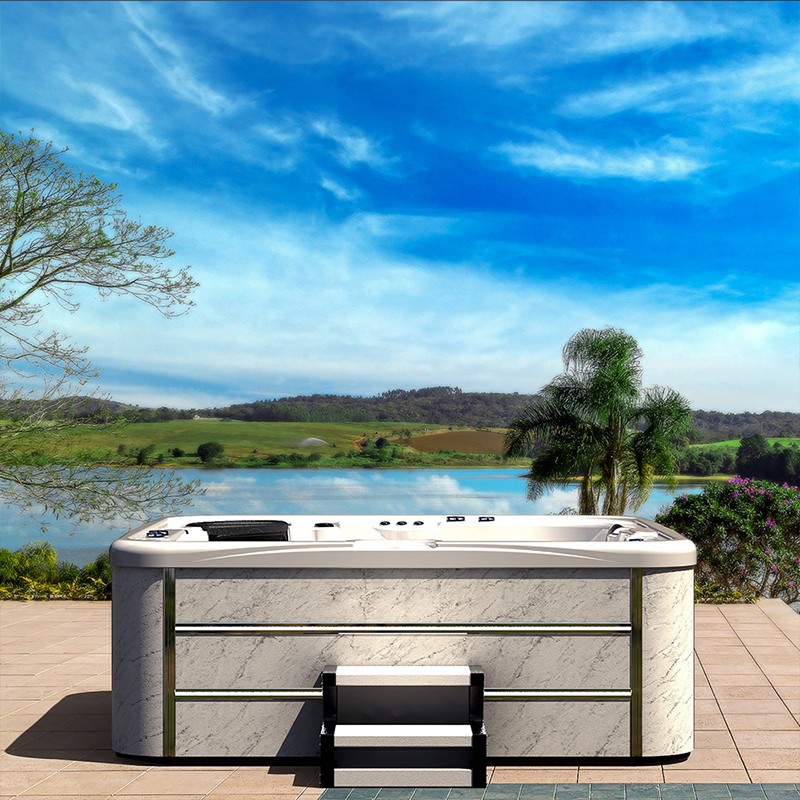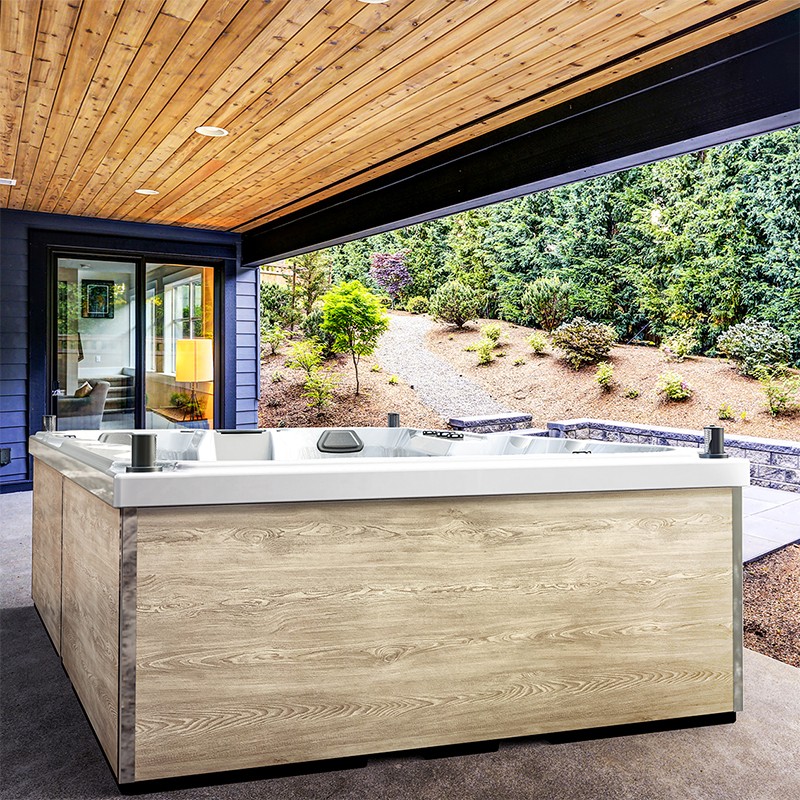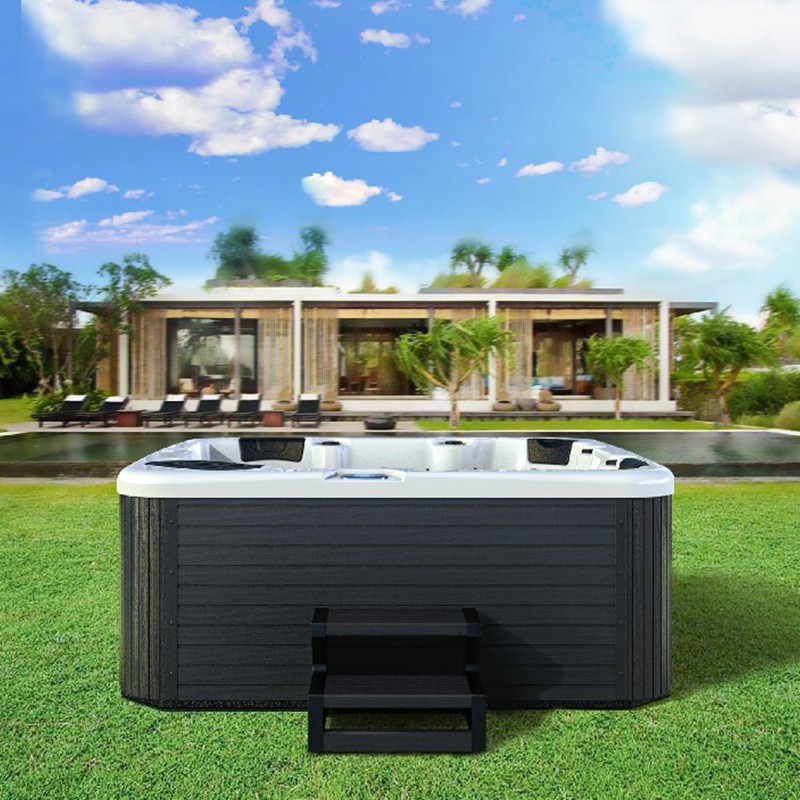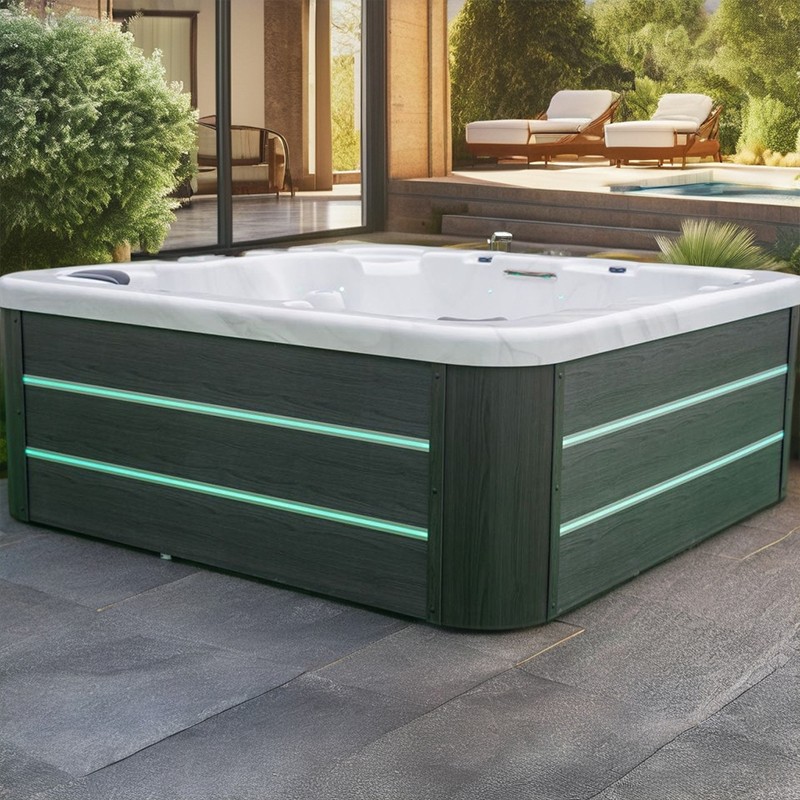
Is acrylic or wood better for outdoor spa jacuzzi?
2025-07-11 15:35As an important leisure facility in modern homes, resorts, hot spring hotels and other places, outdoor spa jacuzzi not only provides a comfortable spa experience, but also promotes blood circulation, relieves muscle fatigue, and brings physical and mental relaxation. When choosing an outdoor spa jacuzzi, the material is an important consideration, which directly affects the service life, thermal insulation performance, maintenance cost and aesthetics of the bathtub. At present, the common outdoor spa jacuzzi materials on the market mainly include acrylic and wood.
So, is it better to choose acrylic or wood for outdoor spa jacuzzi? This article will focus on this issue and conduct a detailed analysis from multiple angles such as material characteristics, durability, thermal insulation, maintenance requirements, appearance aesthetics, use experience, and environmental protection to help consumers make a wise choice.

Characteristics of outdoor spa jacuzzi made of acrylic
1. Basic characteristics of acrylic
Acrylic, scientific name polymethyl methacrylate (PMMA), is a common polymer plastic material. Due to its high gloss, strong corrosion resistance, good plasticity and other characteristics, it is widely used in bathtubs, bathroom cabinets, decorative panels and other fields.
Core features of acrylic outdoor spa jacuzzi:
● Smooth surface: Acrylic material has excellent gloss, smooth surface, easy to clean, and not easy to accumulate dirt and bacteria.
● Strong corrosion resistance: Acrylic spa jacuzzi tub can resist chemical components in water quality, such as chlorine, disinfectants, etc., so it is not easy to be corroded and has a long service life.
● Light weight: Compared with wooden materials, acrylic bathtubs are lighter and easier to install and transport.
● High plasticity: Acrylic materials can be made into various shapes to adapt to different water flow massage designs, providing a more ergonomic bathing experience.
2. Advantages and disadvantages of acrylic outdoor spa jacuzzi
✅ Advantages:
● Strong weather resistance: Acrylic spa jacuzzi tub can withstand outdoor sunlight, rain and temperature changes, and is not easy to crack or deform.
● Good thermal insulation performance: Compared with ordinary plastic, acrylic has better thermal insulation effect and slower heat loss.
● Easy to maintain: Surface stains can be easily wiped clean, it is not easy to breed bacteria, and it can be kept clean for a long time.
● Various styles: It can be designed in various shapes and sizes according to different needs to meet personalized needs.
❌ Disadvantages:
● Relatively expensive: The price of high-quality acrylic spa jacuzzi tub is relatively high, especially for high-end brands.
● Average impact resistance: Although acrylic material has a certain toughness, it is weaker than wood in impact resistance and may crack due to external force.

Features of wooden outdoor spa jacuzzi
1. Basic characteristics of wood
Wooden outdoor spa jacuzzi is mainly made of natural wood such as red cedar, teak, spruce, cypress, etc. Wooden bathtubs have become the traditional choice of outdoor spa jacuzzi because of their natural beauty, warm touch and good thermal insulation.
Core features of wooden outdoor spa jacuzzi:
● Natural texture: wooden materials have a warm and natural visual effect, highly integrated with the outdoor environment, and create a comfortable atmosphere.
● Excellent thermal insulation: wood itself has good thermal insulation properties, which can effectively reduce heat loss.
● Water resistance (depending on the type of wood): some high-density woods (such as red cedar, teak, etc.) are naturally water-resistant and not easy to rot.
● Environmentally friendly and non-toxic: wooden spa jacuzzi tubs usually do not contain chemical coatings, which is more in line with the concept of environmental protection and health.
2. Advantages and disadvantages of wooden outdoor spa jacuzzi
✅ Advantages:
● Natural beauty: The natural texture and warm texture of wooden spa jacuzzi tubs make it the first choice for many high-end outdoor leisure places.
● Good temperature adaptability: Compared with metal or some plastics, wood is more adaptable to temperature and is not easily deformed due to changes in temperature.
● Good thermal insulation effect: The natural thermal insulation ability of wood can reduce heat loss and maintain water temperature for a longer time.
❌ Disadvantages:
High maintenance requirements: wooden bathtubs require regular maintenance, such as applying waterproof oil, avoiding long-term drying or soaking in water, otherwise they are prone to cracks or deformation.
● Low weather resistance: wood is exposed to the outdoors for a long time and is easily affected by sunlight and rain. It needs regular anti-corrosion treatment, otherwise it is easy to mold and rot.
● Heavy weight: wooden bathtubs are heavier than acrylic spa jacuzzi tubs, making them more difficult to install and carry.
● Large price fluctuations: high-quality wood is more expensive, while low-quality wood has poor durability and unstable cost performance.

Acrylic vs. wood, which one is more suitable for outdoor spa jacuzzi?
1. Selection basis 1: Durability
Acrylic spa jacuzzi tubs are more weather-resistant, chemically resistant and durable. In contrast, wooden spa jacuzzi tubs may crack, mold and other problems in humid or extreme climate conditions, so they require more frequent maintenance.
✅ Recommended: Acrylic spa jacuzzi tub (more weather-resistant, longer life)
2. Selection basis 2: Insulation performance
Wooden spa jacuzzi tubs have better natural insulation and can keep the water temperature for a longer time. But if the acrylic spa jacuzzi tub is equipped with a double-layer insulation structure or insulation cover, its insulation performance can also be comparable to that of wooden bathtubs.
✅ Recommended: Wooden bathtub (if you don't mind maintenance work)
✅ Recommended: Acrylic bathtub with double insulation (easier to maintain, insulation is close to wood)
3. Selection basis 3: Aesthetics
Wooden spa jacuzzi tubs are more suitable for users who pursue original ecological and natural styles with their natural wood grain and unique atmosphere. Acrylic bathtubs offer richer colors and modern shapes.
✅ Recommended: Wooden bathtub (natural style)
✅ Recommended: Acrylic bathtub (modern and simple style)
4. Selection basis 4: Maintenance needs
Acrylic spa jacuzzi tubs are easy to maintain and only require regular cleaning. Wooden bathtubs require a waterproof protective layer and regular drying, which has a high maintenance cost.
✅ Recommended: Acrylic spa jacuzzi tub (easier to maintain)

Spa jacuzzi tub: Which material is better?
If you pay more attention to durability and easy maintenance, choose acrylic spa jacuzzi.
If you like the natural wood beauty and are willing to maintain it regularly, wooden spa jacuzzi tub is a good choice.
On the whole, the advantages of acrylic spa jacuzzi tub are more comprehensive, especially suitable for long-term outdoor use, while wooden bathtubs are more suitable for users who pursue natural style and are willing to invest extra maintenance.
Do you offer training for installation and maintenance?
Yes. As part of our turnkey supplier services, we offer professional training for spa installation, troubleshooting, maintenance, and service. We provide technical manuals, onsite or online training by experts from our 20+ technical team, and ongoing support. Training is available to distributors, dealers, resort maintenance teams, or individual installers. We also provide service kits at cheap, discounted prices, and detailed instructions to uphold product warranty and optimize spa performance.
